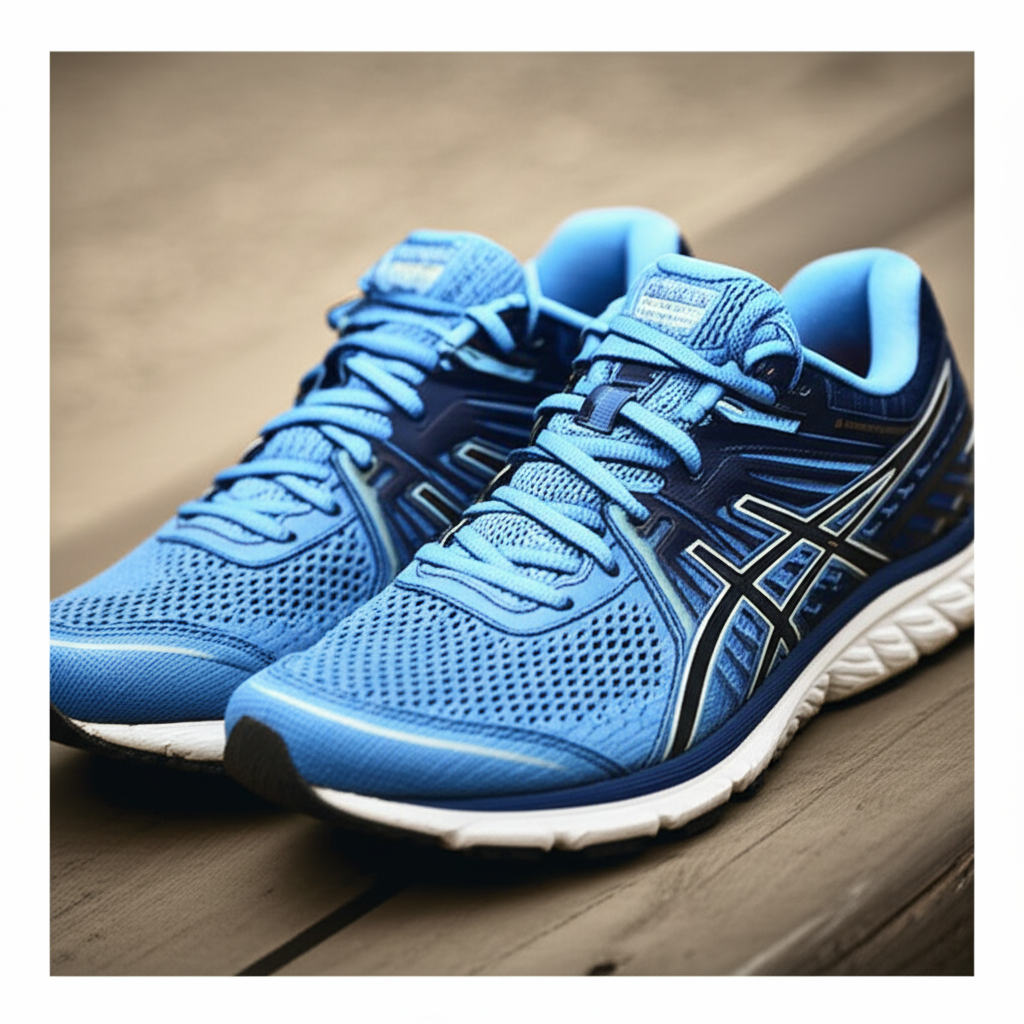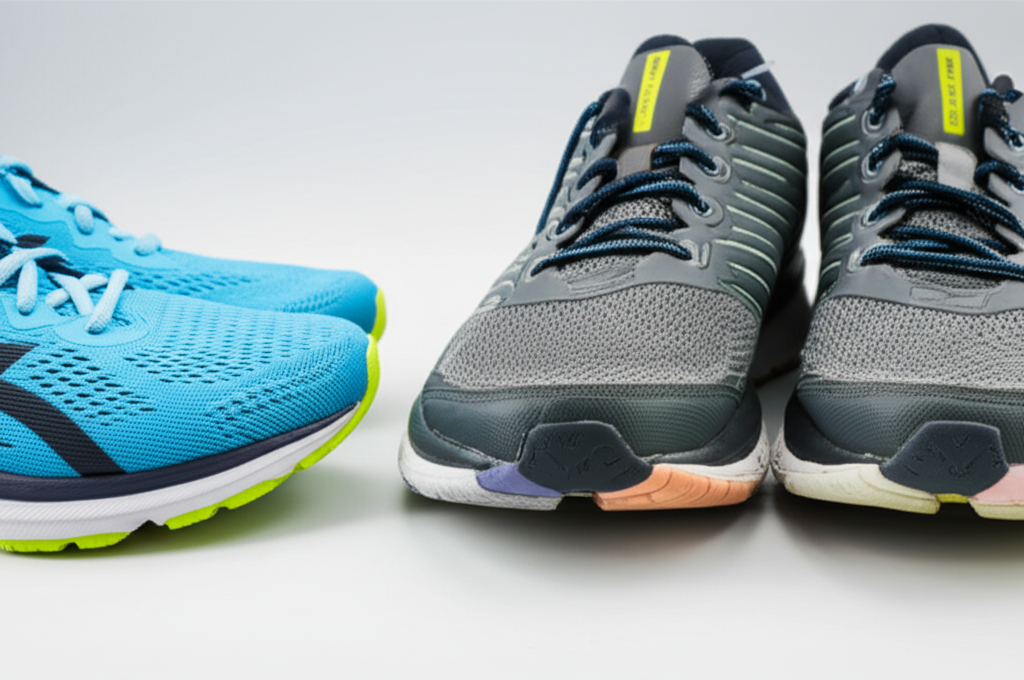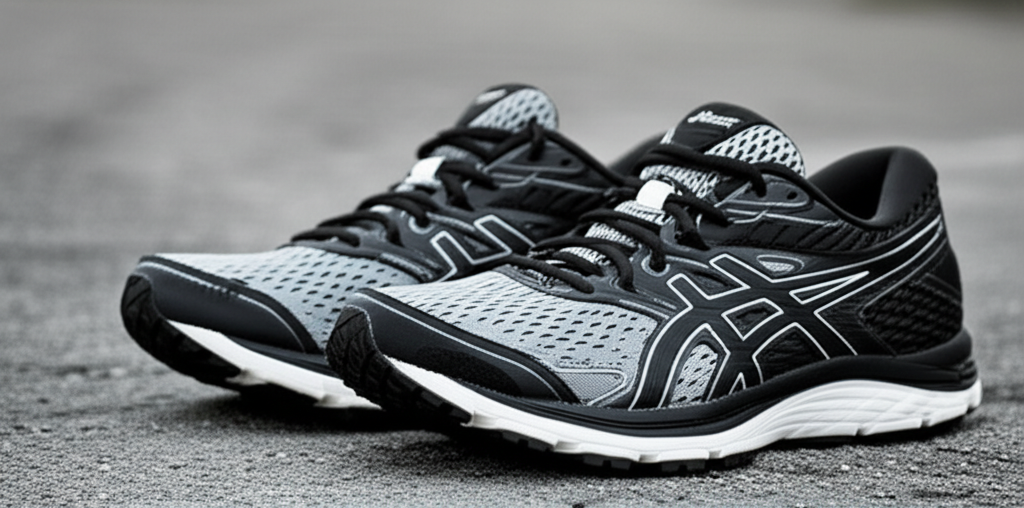Are Running Shoes Good For Walking? The Shocking Truth Revealed!
Yes, running shoes can be good for walking, but they aren’t always the best choice. Understanding the key differences in design and support will help you choose the perfect shoe for your walking needs and prevent discomfort.
Key Takeaways
- Running shoes offer more cushioning for forward motion.
- Walking shoes provide better support for side-to-side stability.
- Consider your walking style and terrain for the right fit.
- Proper footwear prevents foot pain and injuries.
- Investing in the right shoes enhances walking comfort.
- Running shoes can be worn for walking, with caveats.
Why the Confusion? Running vs. Walking Shoes
It’s a question many of us have asked: “Can I just wear my running shoes for my daily walks?” You’re not alone in this! The lines between different types of athletic footwear can seem blurry, especially when you’re just starting out. You want to be comfortable and avoid any aches or pains, so choosing the right shoes is important. But what if you already own a great pair of running shoes? Do they do the job for a brisk walk around the park?
The truth is, while there’s overlap, running shoes and walking shoes are designed with different activities in mind. This article will break down those differences in a simple, easy-to-understand way. We’ll explore why your running shoes might not be ideal for every step you take and what to look for when you’re ready to buy. Get ready to step into a world of comfort and discover the shocking truth about whether your running shoes are truly good for walking!
Understanding the Differences: What Makes a Shoe a Running Shoe?

Running is a high-impact activity. When you run, your feet hit the ground with significant force, often several times your body weight. Running shoes are engineered to absorb this impact and propel you forward. They typically feature:
Cushioning for Impact Absorption
The most noticeable feature of running shoes is their ample cushioning, especially in the heel and forefoot. This cushioning, often made from foam materials like EVA (ethylene-vinyl acetate) or proprietary blends, is designed to:
- Reduce the shock that travels up your legs and into your joints (ankles, knees, hips).
- Provide a responsive feel that helps return energy with each stride.
- Protect your feet from the repetitive pounding of running.
Think of it like a mini shock absorber for every step you take on a run. This can feel great, especially if you’re running on hard surfaces like pavement.
Flexibility and Lightweight Design
Running involves a forward-motion stride, with a distinct heel-to-toe roll. Running shoes are built to be flexible, allowing your foot to bend naturally through this motion. They are also generally lightweight to minimize fatigue during longer runs. This design focus means:
- The shoe bends easily at the ball of the foot.
- They don’t weigh you down, which is crucial for performance.
- The structure prioritizes a smooth transition from landing to push-off.
Specific Support Features
Depending on your foot type and running style (pronation), running shoes can offer:
- Neutral cushioning: For runners with a neutral gait.
- Stability features: To help control overpronation (when the foot rolls inward excessively).
- Motion control: For severe overpronation.
These features are highly specialized for the biomechanics of running, aiming to guide your foot through a specific motion to prevent injury.
What About Walking Shoes? The Unique Design for Your Stroll
Walking, while a fantastic form of exercise, is a lower-impact activity than running. Your feet strike the ground with less force, and the motion is generally more upright and stable. Walking shoes are designed to complement these characteristics:
Support and Stability for a Natural Gait
Walking involves a heel strike, a roll through the foot, and a toe-off. Walking shoes often provide:
- More structured support: Especially in the midfoot, to help maintain stability.
- Firmer soles: To provide a solid base and prevent excessive foot flexing.
- Enhanced ankle support: Some walking shoes offer higher collars for added stability, particularly on uneven terrain.
The goal is to provide a comfortable, stable platform that supports your foot’s natural movement during walking.
Durability for Everyday Use
Walking shoes are often built with more durable materials, especially in the outsole, as they are expected to withstand more miles on various surfaces and be worn more frequently for casual use. This means:
- They can handle more wear and tear from daily activities.
- The materials are chosen for longevity, not just performance.
Comfort Over Responsiveness
While running shoes focus on cushioning and energy return, walking shoes prioritize overall comfort for longer periods of standing and walking. This can translate to:
- A more comfortable, less aggressive feel underfoot.
- Features designed for breathability and temperature regulation for all-day wear.
The “Shocking Truth”: Are Running Shoes Really Bad for Walking?
Now, let’s get to the heart of the matter. Are running shoes fundamentally bad for walking? Not necessarily, but they might not be optimal for every walking scenario. Here’s why:
Cushioning Might Be Too Much or Misplaced
The super-soft, plush cushioning in many running shoes, while great for absorbing running impact, can sometimes feel unstable for walking. Your foot might sink too much, leading to a less efficient stride. Additionally, the cushioning is often concentrated in areas that might not receive as much impact during walking. This can lead to:
- A feeling of instability or wobbliness.
- Less efficient energy transfer for a walking gait.
- Potential for foot fatigue if the cushioning is too soft for your natural walking mechanics.
Flexibility and Lack of Support
Running shoes are designed to bend easily at the ball of the foot to facilitate a forward roll. While this is great for running, it can mean less support for the arch and midfoot during walking. If you have flat feet or need more arch support, a running shoe might not provide it sufficiently for your walks, potentially leading to:
- Arch pain.
- Plantar fasciitis symptoms.
- General foot discomfort over time.
Wear Patterns and Longevity
Running shoes are designed to perform under the specific stresses of running. Using them for walking, especially if you walk long distances or on varied terrain, can wear them out differently than intended. The outsole and cushioning might degrade faster in certain areas, reducing their effectiveness for both running and walking.
When Running Shoes Can Be Good for Walking

Despite the potential downsides, there are situations where your running shoes can serve you well for walking:
For Short, Casual Walks
If you’re going for a short, leisurely walk around the block or to the mailbox, your running shoes will likely be perfectly fine. The impact is minimal, and the differences in shoe design won’t be as noticeable.
If They Feel Comfortable and Supportive
Every foot is different! Some people find that the generous cushioning and fit of their running shoes are incredibly comfortable for walking, even for longer distances. If your running shoes feel great on your feet for walking, and you don’t experience any pain or instability, then they are serving you well.
For Specific Types of Running Shoes
Some running shoes are designed with a more balanced approach to cushioning and support. For example, many modern “lifestyle” running shoes or daily trainers offer a good blend of comfort and stability that can translate well to walking.
When to Opt for Dedicated Walking Shoes
If you plan on walking frequently, for longer distances, or on varied terrain, investing in a pair of walking shoes is often a wise decision. Here’s when they shine:
Long-Distance Walking
For those aiming for miles, dedicated walking shoes offer the sustained support and comfort needed. They are designed to keep your feet happy for hours on end. This is crucial for preventing fatigue and potential injuries like blisters or shin splints.
Walking on Varied or Uneven Terrain
If your walks take you on trails, gravel paths, or uneven sidewalks, you’ll benefit from the enhanced stability and often deeper tread patterns found in walking shoes. Some walking shoes also offer water-resistant features, making them more versatile.
Specific Foot Conditions or Needs
Individuals with conditions like plantar fasciitis, bunions, or those who need significant arch support will often find more relief and stability in shoes specifically designed for walking, which tend to have a firmer sole and more structured support.
To Preserve Your Running Shoes
Using your running shoes solely for running helps them maintain their intended performance and cushioning for longer. Using them for walking can accelerate wear and tear, potentially shortening their lifespan for running.
Key Features to Look for in Walking Shoes
When you’re ready to buy shoes specifically for walking, keep these features in mind:
Flexibility and Arch Support
A good walking shoe should flex naturally at the ball of your foot but offer firm support through the arch and midfoot. This balance prevents over-flexing and supports your foot’s structure.
Cushioning
Look for cushioning that provides comfort without being overly soft or unstable. It should feel supportive rather than like sinking into quicksand.
Outsole Design
A durable rubber outsole with good traction is essential. For walking, you want a tread that can handle various surfaces without being too aggressive, which can hinder a smooth heel-to-toe roll.
Heel Counter
A firm heel counter helps to stabilize your heel and prevent slippage, contributing to overall foot and ankle support.
Fit and Comfort
This is paramount! Shoes should feel comfortable from the moment you try them on. There should be enough room in the toe box, and no pinching or rubbing. Your heel should feel secure.
Table: Running Shoes vs. Walking Shoes – Key Differences

Here’s a quick comparison to help you visualize the distinctions:
| Feature | Running Shoes | Walking Shoes |
|---|---|---|
| Primary Purpose | High-impact forward motion, shock absorption, energy return | Comfortable, stable, supportive locomotion for everyday activity |
| Cushioning | Often plush, responsive, concentrated for impact | Comfortable, supportive, balanced for sustained wear |
| Flexibility | Highly flexible, especially at the forefoot | Flexible at the forefoot, but with more midfoot/arch support |
| Support | Specialized for pronation control (neutral, stability, motion control) | General arch and midfoot support, stable heel counter |
| Outsole | Designed for grip and durability during running strides | Durable rubber, good traction for various surfaces, less aggressive tread |
| Weight | Generally lighter for performance | Can be slightly heavier for durability and support |
Pro Tips: Getting the Best Fit and Longevity
Pro Tip: Always try on shoes at the end of the day when your feet are slightly swollen. This ensures a comfortable fit even after hours of activity. Wear the type of socks you’ll typically use for walking when trying on new shoes.
Choosing the Right Shoes for Your Activity: A Practical Guide
To make an informed decision, consider these questions:
What is your primary activity?
If you’re a dedicated runner, invest in good running shoes. If walking is your main form of exercise, prioritize walking shoes.
What surfaces will you be walking on?
Pavement, trails, gym floors? This will influence the type of outsole and cushioning you need.
How long and how often will you walk?
For short, infrequent walks, most comfortable shoes will do. For long-distance or daily walks, specialized shoes are recommended.
Do you have any foot conditions or pain?
Consulting a podiatrist or a shoe specialist can help identify specific needs for support or cushioning.
A great resource for understanding biomechanics and footwear is the American Podiatric Medical Association (APMA). They offer insights into foot health and the importance of proper shoe selection for various activities. You can find more information on their website, often with sections dedicated to footwear guidance.
FAQs: Your Running Shoe & Walking Shoe Questions Answered
Q1: Can I wear my old running shoes for walking?
A: Yes, for short, casual walks, old running shoes can be perfectly fine, especially if they still have some cushioning left. However, if they are very worn out, they might not provide adequate support, and dedicated walking shoes would be better for longer distances.
Q2: Will my running shoes cause me pain if I walk in them?
A: They might, especially if the cushioning is too soft or the support doesn’t match your walking gait. You could experience arch pain, heel pain, or general foot fatigue. It’s best to listen to your body and switch to walking shoes if discomfort arises.
Q3: How do I know if a running shoe is okay for walking?
A: If the running shoe feels stable, supportive, and comfortable for your walking duration without any pain, it’s likely okay for you. Consider how the shoe flexes and supports your arch during your walking stride.
Q4: What is the main difference between running and walking shoes?
A: Running shoes are built for high-impact absorption and forward propulsion with more cushioning. Walking shoes focus on providing stability, support, and comfort for a lower-impact, more upright gait.
Q5: Are trail running shoes good for walking on trails?
A: Yes, trail running shoes often make excellent walking shoes for trails. They typically offer good traction, durability, and stability, which are beneficial for uneven terrain.
Q6: Should I buy separate shoes for running and walking?
A: It’s highly recommended if you engage in both activities regularly. This ensures each shoe type performs optimally for its intended purpose, providing the right support and cushioning, and extending the life of both pairs.
Q7: How often should I replace my walking shoes?
A: Like running shoes, walking shoes typically last between 300-500 miles or about 6-12 months with regular use. Signs they need replacing include worn-out soles, compressed cushioning, and new aches or pains after walking.
Conclusion: Step Confidently Towards the Right Footwear
So, are running shoes good for walking? The shocking truth is that while they can be used, they are not always the ideal choice. Running shoes are specialized for the dynamic, high-impact nature of running, prioritizing cushioning and forward propulsion. Walking, being a lower-impact activity that requires stability and sustained comfort, often benefits from shoes designed with those specific needs in mind.
Understanding the subtle yet significant differences between running and walking shoes empowers you to make better choices for your foot health and comfort. If you’re a casual walker or just starting, your running shoes might suffice. However, for dedicated walkers, those with specific foot concerns, or anyone seeking maximum comfort and support on their journeys, investing in a pair of walking shoes is a step in the right direction. Listen to your feet, consider your activity, and choose wisely to enjoy every stride.
